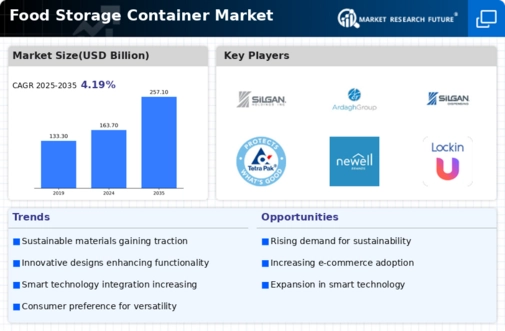Market Analysis
In-depth Analysis of Food Storage Container Market Industry Landscape
Processed and convenience foods are known for their longer shelf life and easy usage. These include canned goods, frozen meals, ready-to-eat snacks, and chilled food products. The demand for such foods is rising due to factors like the prevalence of franchise food outlets, higher consumption of out-of-home meals in urban areas, and the growth of the retail industry. Busy lifestyles, an aging population, and increased awareness about nutrition, safety, variety, and product appeal also contribute to the popularity of processed and convenient food options.
Extending the shelf life of food products brings several advantages. It provides manufacturers with more time to transport and sell products, reducing losses from spoilage, resulting in lower operating costs. Longer shelf life also allows manufacturers to reach customers located farther away. This convenience benefits customers and boosts product sales. Manufacturers employ various strategies to extend shelf life, and improving packaging is a fundamental aspect.
Packaging plays a crucial role in preserving the freshness of food products. It shields food from factors that could cause spoilage, creating a direct connection between packaging and shelf life. Different types of packaging focus on reducing spoilage and protecting contents from various threats. Heat, for example, can be utilized to eliminate microorganisms and sterilize food containers, extending the shelf life of juices, syrups, soups, jams, sauces, and spreads.
Processed foods cater to nutritional needs while saving time, money, and energy spent on cooking at home or in hotels. As a result, the global demand for processed and convenient foods is consistently on the rise. Additionally, the increasing per capita disposable income contributes to the growth of the food storage container market. In developing countries, higher disposable incomes lead to increased discretionary spending.
Although the demand for processed and convenience foods is currently low in developing regions, several factors are expected to drive the need for food storage containers. These include the rising use of online food applications, the emergence of local brands, and increased health awareness in major developing regions. Consequently, the impact of the growing demand for processed and convenient food alternatives on the global food storage container market is anticipated to shift from moderate to high in the forecast period.












Leave a Comment